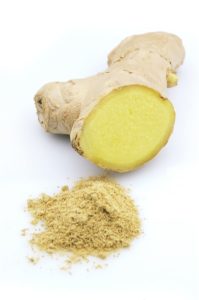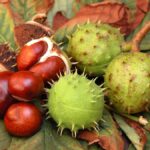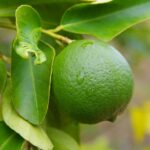Half spicy and peppery, half lemony, slightly sweet but pungent: that’s how you might describe the flavor of ginger.
Ginger is used as a flavoring for both sweet and savory dishes and is one of the key ingredients in the cookery of China, Japan, Southeast Asia, India, the Caribbean, and North Africa.
Ginger is added to meats, poultry, fish, preserves, pickles, marinades, sweet potatoes, winter squash, carrots, beets, pumpkin, rhubarb, peaches, fruit salad, stewed fruit, cookies, cakes, syrups, puddings, and beverages such as tea, beer, ale, and wine.
Fresh ginger root is usually grated or slivered and often added to savory dishes in Chinese, Japanese, and East Indian cooking. Fresh ginger enhances marinades, teriyaki sashimi, and sushi.
Dried ground ginger is used often by Europeans and Americans in baked goods. Ground ginger is perfect for spice cakes and gingerbread.
Young spring ginger and mature ginger
Fresh ginger is available both young and mature.
Spring ginger
Young ginger which is sometimes called spring ginger has a very thin skin that requires no peeling. The skin is edible. Young ginger is very tender and has a milder flavor than mature ginger. Young ginger is found in Asian markets in the springtime.
Mature ginger
Mature ginger is usually harvested in the fall and has tough skin that must be carefully peeled to reach the flesh underneath. Mature ginger is more pungent than young ginger.
Just harvested ginger—whether young or mature–should have a fresh, spicy fragrance.
Ginger is also used dried, powdered, pickled, preserved in syrup, candied, and crystallized. However, if a recipe calls for fresh ginger due not substitute dried or powdered ginger.

How to choose ginger
Select ginger that is young, plump, and juicy. As ginger matures, it dries out and becomes woody and stringy. Ginger also becomes more pungent as it matures.
Young ginger is lighter in color than the mature rhizome. Young ginger will have pink tips with sections of the stem still attached.
Young and mature ginger should have firm, smooth skin with a light sheen. Avoid ginger that is shriveled or moldy.
How to store ginger
Fresh ginger root can be stored at room temperature for one week and in the refrigerator for up to 3 weeks wrapped in paper towels, pierced foil, or any container that allows it to breathe. Wrapped ginger can be frozen for up to 3 months.
Frozen ginger can be peeled and cut without thawing. Slice off a piece of the root and return the rest to the freezer.
Ginger root can be kept for 2 months in the refrigerator if you peel it and put it in a small jar of vodka or dry sherry. The vodka will take on the flavor of the ginger and can be used in stir-fry sauces or marinades. The ginger can be used as you need it.
Ways to prepare ginger
Fresh ginger can be peeled, sliced, grated, minced, or julienned.
- From the rhizome, trim off just the amount of ginger that you plan to use. If the ginger is mature, lightly scrape or peel away the tough skin before using: use a vegetable peeler or the edge of a spoon.
- Grate or slice across the grain or chop finely ginger root as needed. Ginger used fresh in Asian cooking is usually sliced to the thickness of a coin.
- Other types of ginger: Ground ginger is dried and ground or powdered and used in gingerbread, pumpkin pie, and other baked goods. Use ground ginger in curries and with other spices.
- Candied or crystallized ginger is used as a confection, not a spice, in cookie doughs, muffins, scones, ice cream, and in glazes for roasted poultry or braised root vegetables. Candied ginger is made from slices of ginger that have been softened in sugar syrup and coated with crystallized sugar. Candied or crystallized ginger is also used in chutneys and preserves. Candied ginger can be kept indefinitely.
- Pickled ginger is eaten as an accompaniment with sushi and sashimi and other Asian dishes and added to relish condiments, marinades, and mayonnaise. When young ginger is sliced thin and pickled in sweet vinegar it turns pink.
- Ginger juice or oil can be used to provide the essence and flavor of ginger without the fibers. Ginger juice is used in sauces and marinades to flavor poultry or seafood. To extract the juice place shredded or pureed ginger in a piece of cheesecloth and squeeze out the juice.
Cooking with ginger
The flavor of ginger will vary in strength depending on when it is added during the cooking process. For the fullest taste, add ginger at the end of the cooking. For the most subtle flavor, add ginger at the beginning of cooking.
Ways to serve ginger
Ginger will season both sweet and salty dishes.
- Slice or pound ginger to use in dips, marinades, soups, stew, curries, and drinks.
- Pickled ginger is used as a condiment by the Chinese and Japanese. In Japanese cookery, it is used as a side dish called gari to accompany sushi.
- Add ginger to sauces, meat, poultry, fish, seafood, vegetables, rice, tofu, marinades, stock, soups, fruits, cakes, and beverages.
- Use ginger to make jam and candy.
- Use powdered ginger to flavor cakes, cookies, gingerbread, compotes, and curries.
Ginger flavor partners
Ginger goes well with apples, bananas, beef, chicken, curry, duck, fish, honey, pork, puddings, salad, sate, seafood, sesame oil, soy sauce, and sugar.
Ginger nutrition
Ginger contains potassium and small amounts of magnesium and phosphorus.
Ginger medicinal use
Ginger has been used as a tonic, antiseptic, diuretic; fever reducer, appetite aid, and digestion stimulant. Herbalists use ginger to treat arthritis, bronchitis, colitis, colds, coughs, rheumatic pain, and menstrual cramps.
About ginger
The peak season for fresh ginger is early spring through late summer. Ginger is sometimes also called stem ginger and Canton ginger.
Ginger is cultivated throughout the tropics. The leading producers of ginger are India and Jamaica. Ginger is also cultivated in China, Taiwan, Thailand, Nigeria, and Australia.
There are many varieties of ginger in each region of cultivation. Jamaican white ginger and yellow ginger are considered among the best.
Ginger is an herbaceous perennial that grows to 3 feet (90 cm) tall with narrow lance-shaped leaves. The plant’s tan to dark-brown skinned tuberous rhizome–which looks like knobby fingers and is sometimes referred to as “hands”–is used in cooking.
The flesh beneath the ginger root’s skin ranges in color from pale greenish-yellow to ivory. The flesh can be subtle or highly aromatic and pungent. The aroma and flavor of ginger varies according to its region of origin, cultivar, conditions in which grown, and the stage of growth at harvest.
Ginger originated in southern India where it has been cultivated for at least 3,000 years. Traders brought ginger to Persia in the fifth century B.C. Arab traders took it on to the Mediterranean in the first century A.D.
The Spanish introduced ginger to the New World.
The name ginger is derived from Gingi, near Pondicherry in southern India, where it is thought to have originated. The Latin word for ginger is zingiber; the French is gingibre; Old English is gingiber.
The botanical name for ginger is Zingiber officinale.
Articles of interest:
Best Herbs for Container Growing
Garden Planning Books at Amazon:
- Vegetable Garden Almanac & Planner
- Kitchen Garden Grower’s Guide Vegetable Encyclopedia
- Vegetable Garden Grower’s Guide
- Tomato Grower’s Answer Book
More kitchen tips:
Bring your harvest to the table. Kitchen prep tips and easy recipes for the vegetables you grow. Click below for vegetable prep and recipes you can use now.
- Almonds
- Apples
- Apricot
- Aprium
- Artichoke
- Arugula
- Asparagus
- Avocado
- Bamboo Shoots
- Banana
- Basil
- Beans, Dried
- Beans. Long
- Beans, Shell
- Beans, Snap
- Beets
- Bitter Melon
- Blackberry
- Bok Choy
- Broccoli
- Broccoli Raab
- Brussels Sprouts
- Cabbage
- Cardoon
- Carrots
- Cauliflower
- Celeriac
- Celery
- Chard
- Chayote Squash
- Cherimoya
- Cherries
- Chestnut
- Chickpea
- Chinese Cabbage
- Chives
- Cilantro
- Citron
- Clementine
- Collards
- Coriander
- Corn, Sweet
- Corn, Baby
- Corn Salad, Mache
- Cranberry
- Cress
- Cucumber
- Daikon
- Dandelion
- Dill
- Eggplant
- Endive, Belgian
- Endive and Escarole
- Fava Beans
- Fig
- Florence Fennel
- Garlic
- Ginger
- Grapefruit
- Grapes
- Guava
- Horseradish
- Jerusalem Artichoke
- Jicama
- Jujube
- Kale
- Kiwifruit
- Kohlrabi
- Kumquat
- Leeks
- Lemongrass
- Lemons
- Lettuce
- Lime
- Mache (Corn Salad)
- Mandarin Orange
- Mango
- Maple Syrup
- Marjoram
- Melons
- Michihili
- Mint
- Mizuna
- Mushrooms
- Mushrooms, Cremini
- Mustard Greens
- Napa Cabbage
- Nectarine
- Okra
- Olives
- Olive oil
- Onions
- Oranges
- Oregano
- Parsley
- Parsley Root
- Parsnips
- Passion Fruit
- Pawpaw
- Peaches
- Pears
- Peas, Garden Snap
- Peas, Snow
- Pei Tsai
- Peppers, Chili
- Peppers, Sweet
- Persimmon
- Pineapple
- Pineapple Guava
- Plantain
- Plums
- Pluots
- Pomegranate
- Potatoes
- Prickly Pear
- Pumpkin
- Quince
- Radicchio
- Radishes
- Raspberries
- Rosemary
- Rhubarb
- Rutabaga
- Sage
- Salsify
- Sauerkraut
- Savory
- Shallots
- Sorrel
- Spinach
- Squash, Summer
- Squash, Winter
- Strawberries
- Sunchokes
- Sunflower
- Sweet Potato
- Swiss Chard
- Tangerine
- Taro
- Tarragon
- Thyme
- Tomatillo
- Tomato
- Turnip
- Turnip Greens
- Yams















